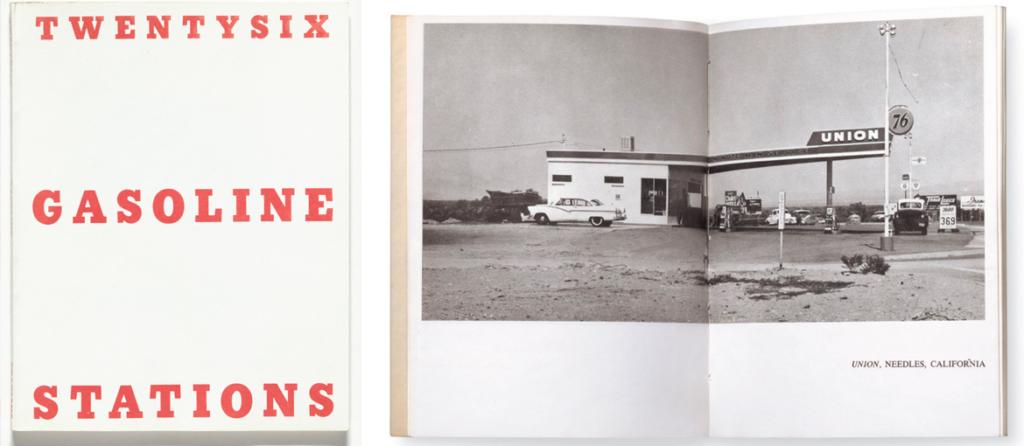While an art book generically refers to all publications that refer to art (such as catalogs, artist monographs, treatises and criticism…), an artist’s book is a work of art that uses the book as its format. Sometimes it is the form of the book itself, other times it is its function that inspires the work. Sometimes artist’s books make use of sophisticated forms of printing, layout and binding, so much so that they create true objects of art (object-books, precisely) other times, although in a conventional form, it is the presentation of the contents that is striking. Sometimes they are limited editions in a few, unique copies, other times they are produced in a large number of copies to allow for economic distribution.
The artist’s book can thus take on various structures and be distributed in a variety of ways, from the most traditional to the most experimental; what distinguishes the artist’s book from any other publication is its ability to disrupt expectations about the essence, form, and function of a book.
Since the genesis of the book as a printed product in the 15th century, artists have played an active role in illustrating them. However, books as actual art objects came into being in the 20th century, with the advent of the Avant-gardes. Famous in this regard are the artist’s books of Futurism, of which you can find among the most notable examples in this article.
Below, however, we have decided to focus on the evolutions of the second half of the century, when, especially from the 1960s onward, the art book shifted from an elitist object to a pop communication tool. The proposed examples will certainly not be able to provide a complete overview of the innumerable, extraordinary forms that artists’ books have taken over the past decades, but they have been chosen to show some approaches and intrigue to a deeper understanding of the phenomenon.
Bruno Munari, Quadrante Illeggibile Bianco e Rosso, 1964. 25 x 25 cm
Since the 1950s, artists in Europe have been experimenting mainly with the book format, producing works with unusual bindings and printing methods. One artist who worked extensively on the book format with great ingenuity, imagination and inventiveness was Bruno Munari. From 1949 Munari began making a series of unreadable books, in which he investigated the format of the book and its fruition, renouncing textual content in favor of exclusively visual communication.
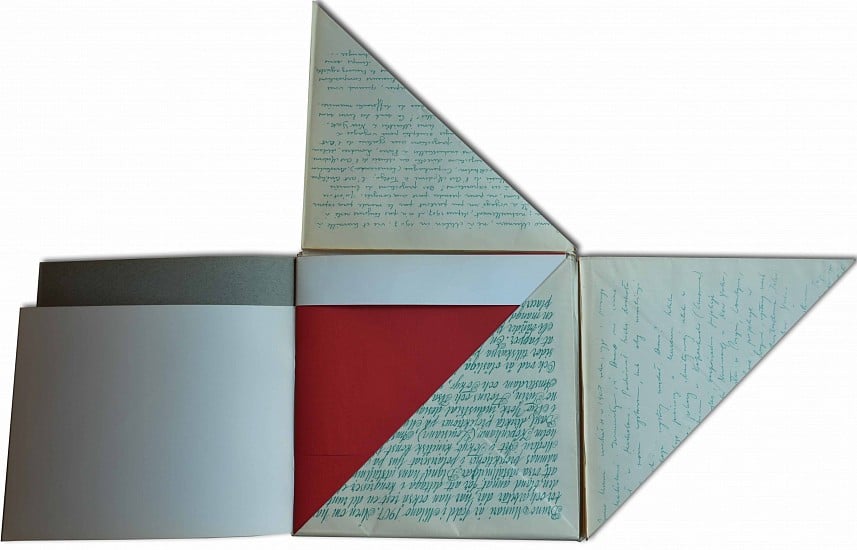
Among them is Quadrante Illeggibile Bianco e Rosso, composed of 40 sheets of white and red cardboard in various shapes. With each new page, the viewer is confronted with a new combination. The overcover consists of a sheet folded several times such that it forms a system of triangles, on which is a biographical note on Bruno Munari translated into 8 languages.
Dieter Roth, Little Tentative Recipe, 1969. 8.8 x 8.8 x 8.8 cm.
Another European master of the artist’s book is the Swede Dieter Roth, who began creating books using printing techniques he learned while working in an advertising agency, then expanded his art in a more innovative and radical way, printing all sorts of content (concrete poetry, newspaper articles, abstract forms) on plastic and other inexpensive materials, eventually incorporating food into his books.
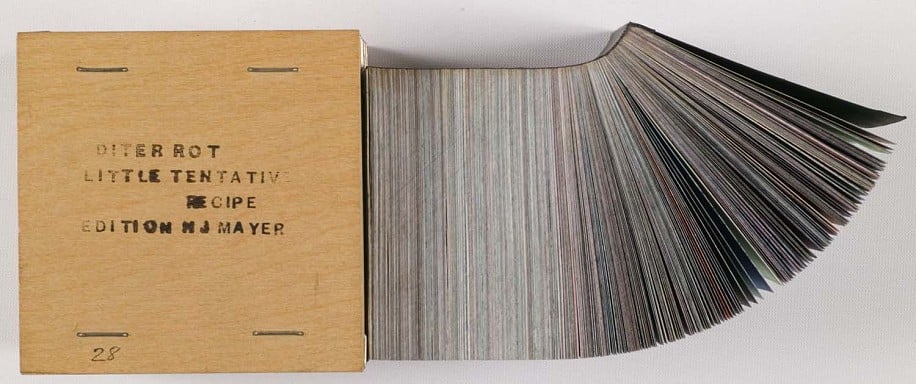
Little Tentative Recipe is a miniature, cube-sized book contained in a box originally made for tea bags. Inside it houses 800 color offset prints made by Watford School of Art students, following Dieter Roth’s directions (recipes).
Edward Ruscha, Twentysix Gasoline Stations, 1963. 17.9 x 14 cm
Meanwhile in the United States, in Los Angeles, Edward Ruscha was making books as works of art following totally different rules: commercial and cheap printing, high print runs, no signatures, and affordable prices. Ruscha in fact, with his series of books containing only a collection of photographs on a specific theme, specified in the title on the cover, was a pioneer in the history of artist’s books.
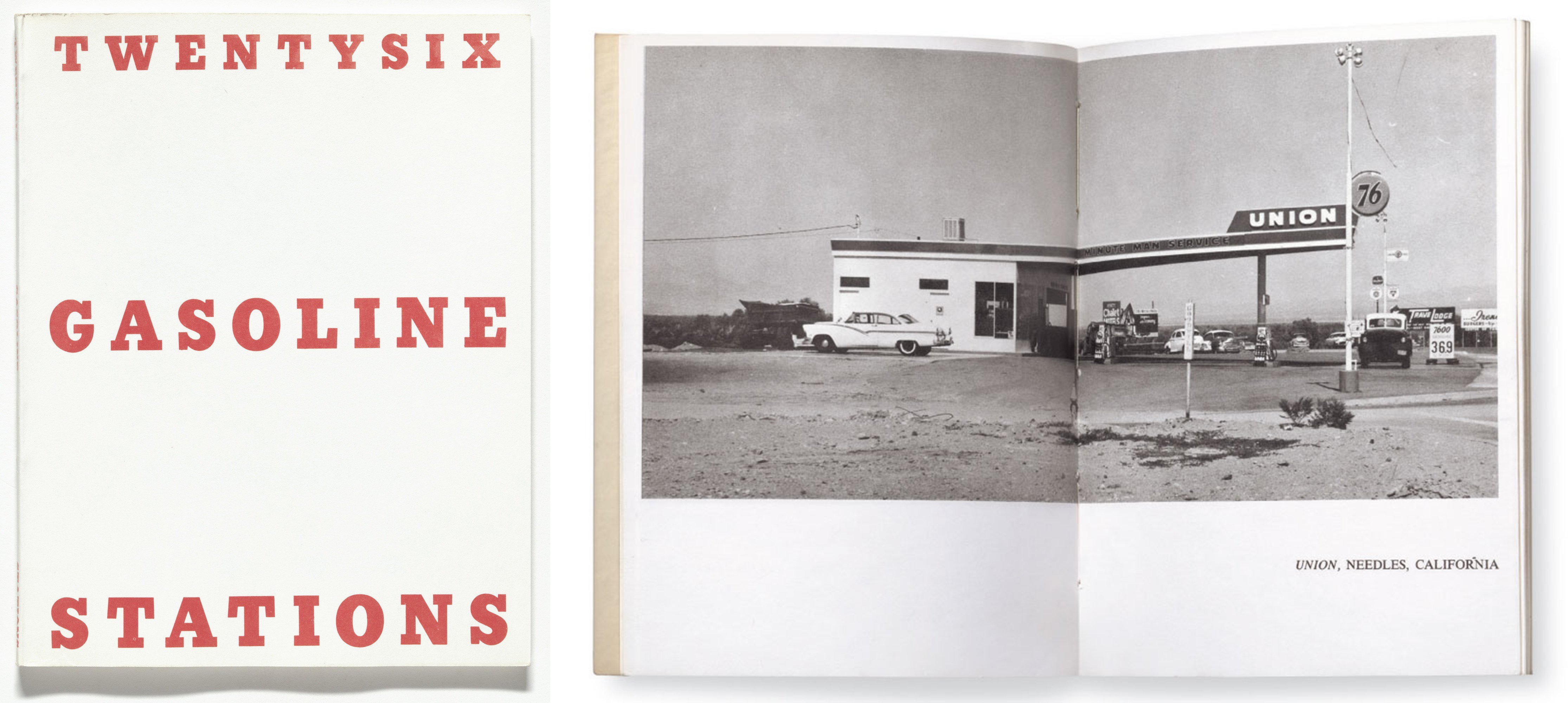
The artist’s intent was to make his work as cheap, accessible and easily transportable as possible, moving art from museums and galleries to the street.
Vincenzo Agnetti, Forgotten book from memory, 1969. 70 x 50 cm
One of the cleanest and most rational examples of conceptual art in the form of a book is Vincenzo Agnetti’s work Libro dimenticato a memoria, in which so much of the pages have been removed that only the margins remain.
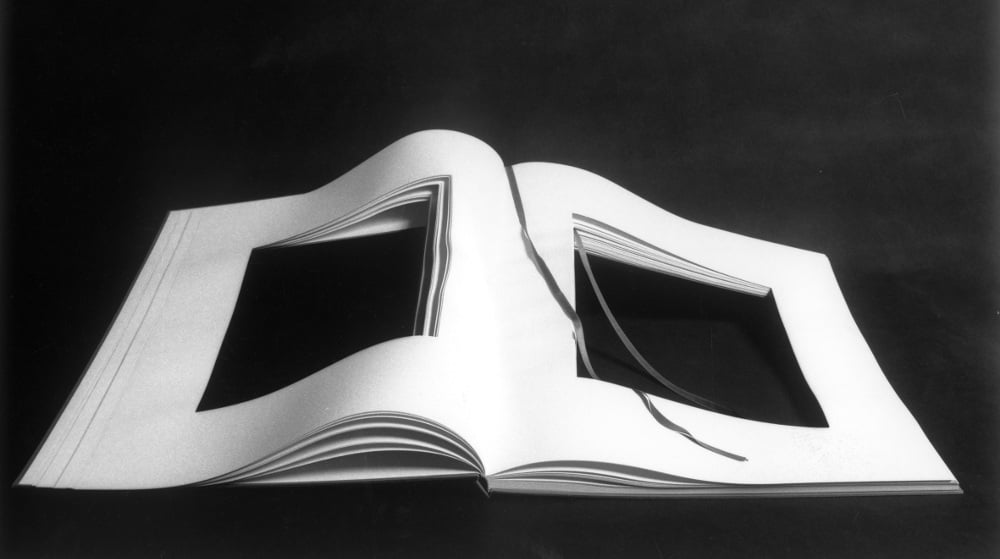
The book is a metaphor for the paradox that invests memory: only by forgetting can space be left for learning what is to come.
Tauba Auerbach, RGB Colorspace Atlas, 2011. 8 x 8 x 8 in. (20.3 x 20.3 x 20.3 cm)
Having exhausted the now distant experiments of the 1960s, today the book, in the digital age and decades after the first announcement of its imminent death, is once again becoming a medium widely explored by artists.
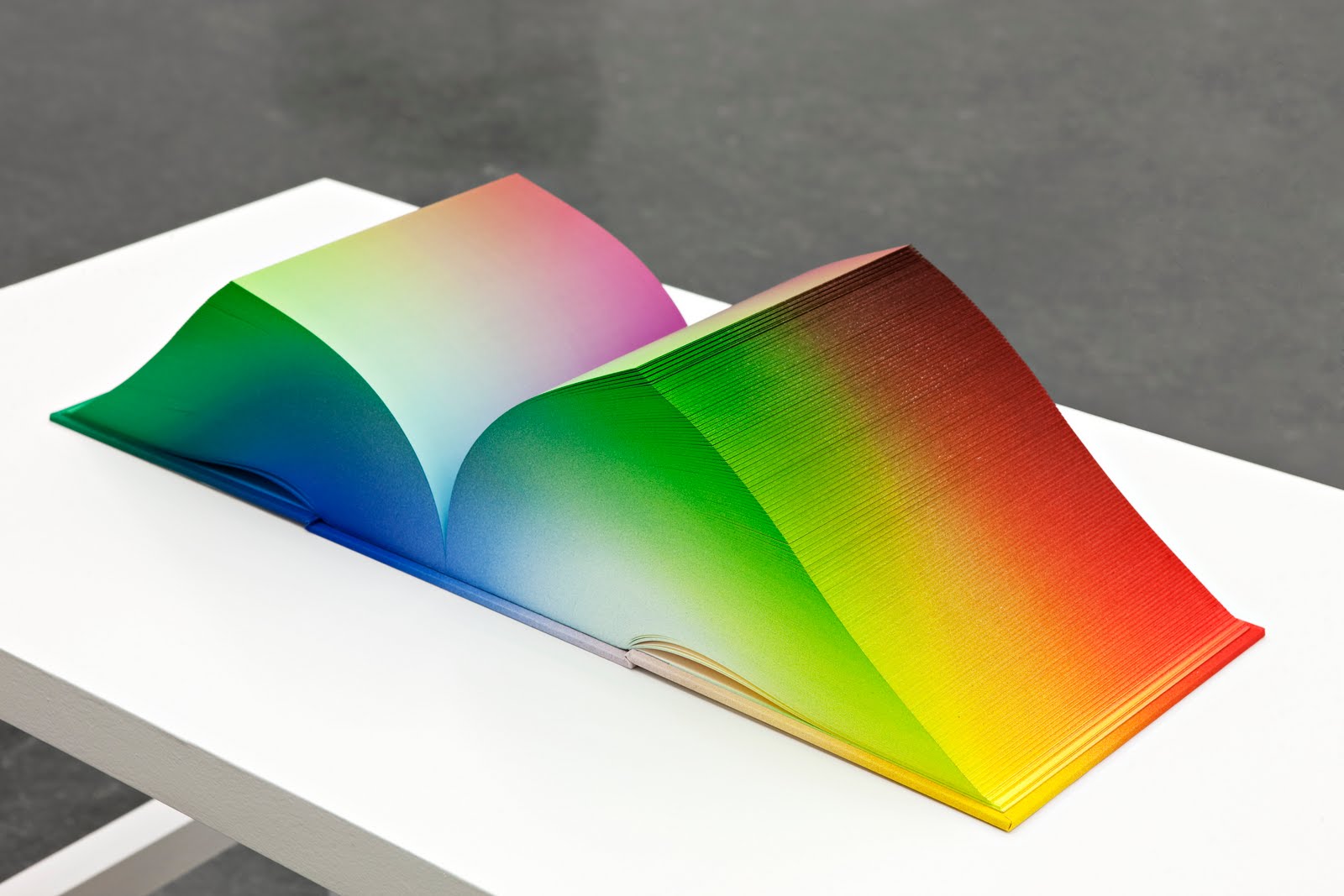
It is precisely thanks to the new insights, new techniques, and new possibilities of (self)publication coming from the digital and networked worlds that the artist’s book regains energy.
Extremely interesting are the experiments of Tauba Auerbach, an American artist living between New York and San Francisco. RGB Colorspace Atlas is a cubic-format book that, as its name implies, represents every possible color within the RGB color range-a color model designed for screens.

